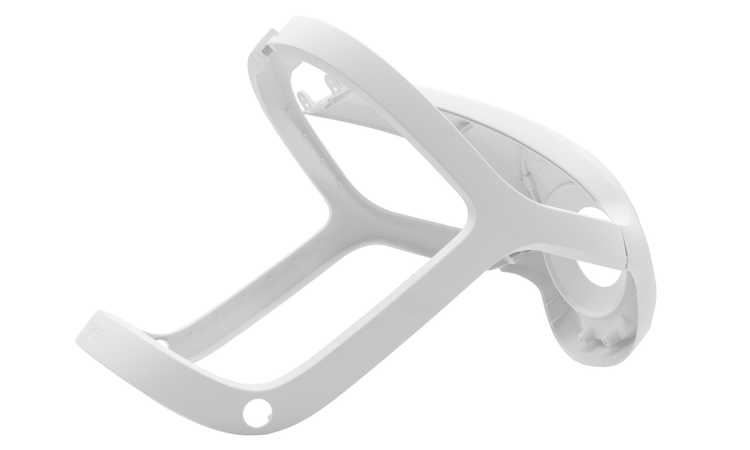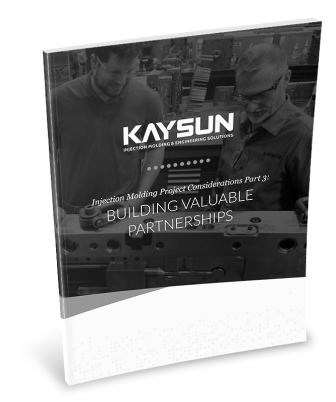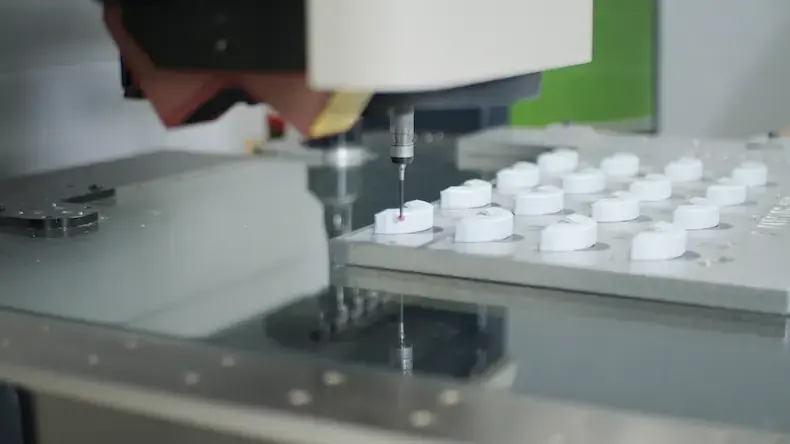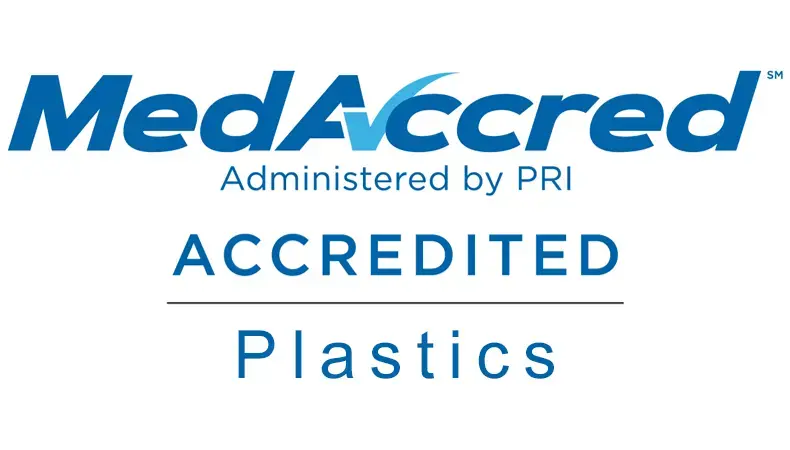Stryker Turns to Kaysun for Steri-Shield® 8 Helmet Solution

When Stryker set out to develop its next-generation Steri-Shield® 8 Personal Protection System, the goal was clear: Raise the bar in surgical PPE.
Steri-Shield 8 isn't just another piece of medical equipment; it's a newly launched personal protection system designed to provide comfort, reliability, and functionality for healthcare professionals in operating room environments.
A key feature of the system is an intuitively designed helmet with three contact points for a customizable fit, controlled airflow targeting the front and back of the neck, a more efficient charging station, and three toga styles. For the first time, the helmet also includes a separation in the headstrap to accommodate long-haired users.
But innovation at this level requires more than a bold idea – it demands collaboration, trust, and the right partners to bring complex concepts to life under intense regulatory, production, and time pressure.
That’s where Kaysun came in.
With a relationship rooted in the success of previous programs, Stryker once again called upon Kaysun as a trusted supplier and strategic partner. From early-stage design guidance to molding highly complex components with exacting cosmetic and functional requirements, Kaysun helped Stryker bring the Steri-Shield 8 helmet to market on time and on spec.
A Foundation of Trust
As a global leader in medical technologies, Stryker is understandably selective about suppliers. Kaysun wasn’t an arbitrary choice for Steri-Shield 8. The relationship began with the Stryker System 9® orthopedic surgery battery pack program, wherein our engineering team adeptly handled highly engineered, precision-molded components.
A lead engineer on the battery pack program moved to Stryker’s Steri-Shield 8 team, and when injection molding complexities arose on the helmet components, he didn’t hesitate to recommend Kaysun. “We formed a good relationship with the Stryker engineering team,” noted a Kaysun Senior Project Engineer. “We became a trusted partner that they felt confident in working with for this helmet program.”
Rising to the Challenge
That trust was soon put to the test when Stryker shared helmet design concepts, outlining technical challenges and a tight development timeline for seven critical components.
Each part posed some molding challenges. However, a featured component’s complex geometries, flexibility, and strict cosmetic requirements was the most demanding.
“After our initial review, we provided feedback that the most intricate component couldn’t be feasibly molded as designed,” our engineer recalled. “But Stryker collaborated with us up front to discuss and incorporate specific design updates. They were confident in our capabilities, and truly partnered with us to bring the part into production.”
Kaysun’s tooling and engineering teams led a review of detailed tooling concepts, and conducted multiple rounds of Moldflow Analysis and Design for Manufacturability (DfM) assessments to evaluate feasibility and part optimization.
Through close collaboration with Stryker, we successfully transformed the complex design into a manufacturable, high-quality injection-molded part. We produced it and the six other helmet components within Stryker’s specifications and timeline.
Delivering Results
“We knew how important this program was to Stryker,” commented Jenna Vogel, Kaysun Business Development Engineer. “The timeline was aggressive. Going from initial engagement to full medical device production in about 12 months is rare and rather impressive. We committed to meeting Stryker’s needs — and we delivered.”
What did success look like from Kaysun’s perspective?
In addition to consistent collaboration with the Stryker team on design and injection molding challenges, tooling expertise and advanced capabilities played significant roles.
Tooling Solutions
Cross-functional Kaysun engineering and tooling teams identified several ways to optimize the tools and molding processes to address the unique and sometimes competing priorities of the helmet components, including:
- Moldflow analysis to optimize the complex geometries’ fill, pack, cool, and warp while also working closely with Stryker on gating, ejection, venting, and weld line placement to ensure the design met cosmetic and dimensional requirements
- Comprehensive, collaborative tool designs to ensure repeatable part formation and tool longevity
- Shot-to-shot cavity pressure monitoring for consistent part repeatability
- Custom inspection fixtures and gauges, detailed inspection programs, and in-process production measurements documentation to ensure exact part replication throughout all production runs
Aesthetics and Color-Matching Solutions
Molding top-quality components was just one aspect of this program. The helmet also required strict attention to surface finishes, part cosmetics, and color-matching which we accomplished through:
- DFM activities including Moldflow analysis and tooling splits to minimize parting lines and ejector pin visibility in cosmetic areas. We also confirmed draft angles were adequate for defect-free part release, especially on textured surfaces and cosmetic areas
- Custom, complex end-of-arm tooling to remove parts from the mold with minimal risk of dragging, scraping, scuffing, or other part-demolding defects
- High-polish features monitoring, including the “Stryker” logo, along with textured surfaces to ensure all cosmetic specifications were consistently met throughout production
- Working with our material vendor to pre-color the resin, ensuring consistent lot-to-lot color matching, and implementing in-house color monitoring during molding runs to maintain appropriate color tolerances
A Partnership That’s Still Growing
We take pride in having met the requirements and aggressive timeline involved in the successful full-scale production of seven critical-use Stryker Steri-Shield 8 system helmet components. It’s an accomplishment not all injection molders can achieve.
But, success in complex medical device injection molding isn’t just about technical wins — it’s about relationship momentum. For Kaysun, the Steri-Shield 8 project opened the door to additional opportunities with Stryker and its extended supplier network.
According to a member of the Kaysun engineering team, the future looks bright for the partnership. “They see our engineering expertise, and our willingness to collaborate. They know we’re going to continue to follow through on our commitments and our promises.”
Leaning Into Innovation
At Kaysun, we’re not ones to shy away from challenging programs for demanding industries. Our experience and expertise allow us to lean into complexities and bring innovations to the table that give our customers a competitive advantage.
Ready to see how advanced injection-molding know-how can accelerate your next medical-device program? Download our white paper, Injection Molding for Competitive Advantage in Medical Device Manufacturing, and discover the proven processes behind breakthrough solutions like Stryker’s Steri-Shield 8.
Subscribe
TO OUR BLOG

How Do Injection Molder Partnerships Influence Project Costs?
You Might Also Like...

How MD&M West 2024 Keeps MedTech Professionals Ahead of the Curve
MD&M West is one of the largest and most respected medical device trade shows …
READ MORE

How MedAccred Accreditation Helped Kaysun Enhance Processes & Quality Systems
When you operate at the top of your game, reach higher. Kaysun had already shown i…
READ MORE

Why Ongoing MedAccred Accreditation Matters to Medical Manufacturers
Kaysun's commitment to excellence is well documented through its certifications, i…
READ MORE
